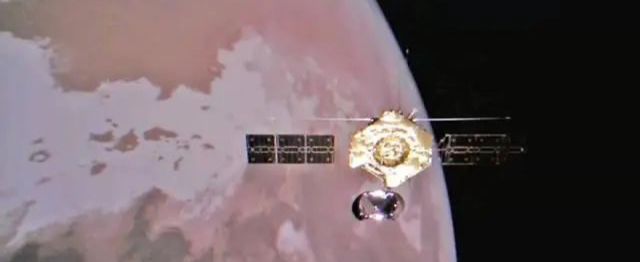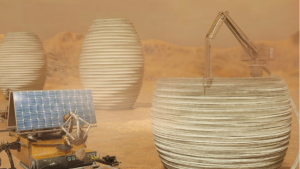China Announces Two-Year Advancement of Mars Soil Sampling Plan

China has made an ambitious leap in its Mars exploration plans by moving up the launch of its Tianwen-3 mission to 2028, two years earlier than initially planned. This mission, focused on bringing back Martian soil samples, marks a critical step in China’s growing role in space exploration.

At the Second International Conference on Deep Space Exploration held in Anhui province, Liu Jizhong, chief designer of the Mars mission, revealed the updated timeline. The mission aims to bring back around 600 grams of Martian soil, with a launch window in 2028 and a projected return to Earth around July 2031. This adjustment from the original 2030 estimate signals China’s confidence in the technology required to achieve this complex task.
 Medium-resolution camera global color image of Mars. Source: Lunar and Deep Space Exploration Science Application Center, National Astronomical Observatories, Chinese Academy of Sciences
Medium-resolution camera global color image of Mars. Source: Lunar and Deep Space Exploration Science Application Center, National Astronomical Observatories, Chinese Academy of Sciences
 A panorama sent back by Zhurong rover of its surrounding area on the Martian surface. /CNSA
A panorama sent back by Zhurong rover of its surrounding area on the Martian surface. /CNSA
China’s Tianwen-3 mission is part of the larger Tianwen program, which kicked off with Tianwen-1. “Tianwen” means “Questions to Heaven.” It comes from a poem written by the ancient Chinese poet Qu Yuan.
Launched in 2020, Tianwen-1 made headlines by successfully landing a rover on Mars in 2021. It became the first Chinese mission to achieve a soft landing on an extraterrestrial planet and conduct surface exploration. Building on these accomplishments, Tianwen-3 will aim to push the boundaries of planetary science and international cooperation by sharing samples and data with global research teams.
 Tianwen-1 orbiter takes a selfie with Mars
Tianwen-1 orbiter takes a selfie with Mars
This mission is only one piece of China’s broader planetary exploration strategy, which also includes the upcoming Tianwen-2 and Tianwen-4 missions. Tianwen-2 is scheduled for 2025 and will target an asteroid, with the goal of performing a flyby and collecting samples. Tianwen-4, meanwhile, is set to explore the Jupiter system in the 2030s.
China’s Mars sample return mission places it ahead of the U.S., which has faced delays and budget overruns in its own Mars exploration efforts. If successful, China could secure a significant lead in the global space race, becoming the first nation to return Martian samples to Earth.
 A ‘selfie’ taken by China’s Zhurong Mars rover during the Tianwen-1 mission. (Image credit: China News Service)
A ‘selfie’ taken by China’s Zhurong Mars rover during the Tianwen-1 mission. (Image credit: China News Service)
As China accelerates its space ambitions, its bold steps reflect a growing confidence and capability, driving human exploration of deep space and answering the “Tianwen”—or “Heavenly Questions”—that have intrigued humankind for millennia.
 Zhurong rover captured by the navigation camera, with the lens pointing towards the rover’s rear. The image shows clear surface textures and rich topographical information. Source: National Space Administration
Zhurong rover captured by the navigation camera, with the lens pointing towards the rover’s rear. The image shows clear surface textures and rich topographical information. Source: National Space Administration
Editor: Zhongxiaowen



